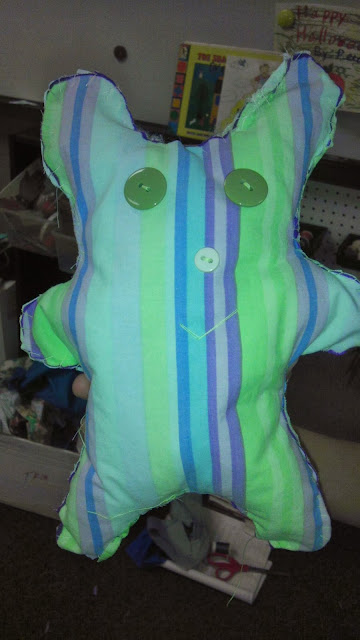Friday, December 06, 2013
Thursday, December 05, 2013
About Me

How does TAB work?
I also discuss the variety of drawing media available, and explain how to clean up.
It is amazing how much the kids enjoy this. I've recently added plastic animals and dinosaurs for the kids to look at while they draw.
The second week, I introduced the collage center, containing colored paper, glue, glue sticks, staplers, scissors, brads, and fabric.
I showed them some collages by Romare Bearden, as well as many student created works. I had to tell them how to determine what adhesive to use, and showed them the stickyometer poster.
They could then choose to go to the collage center, or the drawing center. The kindergartners LOVE the collage center. I love to watch them create. They are so free, so unlimited.
The third week, I opened the watercolor center, with watercolor pans, brushes and paper. The main focus for me was to teach them how to care for the brushes, put on smocks, and where to put their work to dry. They could then choose watercolor, drawing, or collage.
I kept it with just three centers for a few weeks (I see them once a week). It's important for them to learn to care for their supplies and the classroom. But while I wasn't introducing new centers, I did introduce new materials into existing centers, explaining their use (for example, I added whiteboards and markers to the drawing center). I also demonstrated new techniques (crayon resist with watercolors). And I've even started to integrate art principles and elements. Of course I included numerous examples and prints from to reinforce the concepts.
With those three centers humming along, I added the clay center. I did a super brief demo, showing them how to work with it. I did tell them that they could simply create with the clay and not try to keep it, or they could create things for me to fire in the kiln. I gave them admonitions like: "Clay can't be thicker than your thumb, or it will take too long to dry." and"Be sure to join any attachments securely". (Which we all know is MUCH easier said than done!)
Of course, the day I introduced clay, ALL the kids wanted to use it, but I had to limit it to eight. The kids grumbled a bit, but soon were off to other choices (it helped that I introduced craft sticks and chenille stems at the collage center!).
I tried to be as hands off as possible at the clay center. I stayed at the table with them, giving demonstrations as necessary. Joining clay is very difficult, but the determined kids will learn. One third grader created an adorable dog with toothpick thin legs barely hanging on. She wanted me to fire it. I knew there was no way that those pitiful little legs could hang on, I said, "Okay, but you'll need to put it on the shelf to dry." The shelf was only a couple of feet away, but poor little dog was legless by the time he got there! I will admit I felt more than a little coldhearted, but really, this is the only way for them to learn! The student sat with me, and I demonstrated joining and adding just a bit of moisture for her. She worked and worked on that dog, and it finally came together.
After clay was going (it took several weeks for all the students to have a chance, and I stayed at the clay center so they could all have some individual instruction), I was free to add some more centers.
First, I added painting with tempera paints. Next was the architecture or "temporary art", containing legos, blocks, cuisenaire rods, magnets, mosaic boards, and geoboards. This is where the students learn hands on about spatial properties and design elements.
I introduced the fiber center, with weaving and sewing. Kids truly enjoy this one, but they do need significant hands on instruction (especially threading the needles!) and I've put this one away for a bit.
The collage center was joined by the construction center. They can use cardboard, small boxes, and other castoffs to create. Kids have made houses, boats, star wars aircraft, cameras, and so much more here. Their adhesive of choice, though, is tape. Rolls and rolls and rolls of tape! I've spent some time with them, encouraging them to use some of the glues we have, or even to paper mache over the tape, but very few takers so far.
Now, midway through the year, with many centers going, I can work with the students on some art history and appreciation.
TAB is truly a wonderful teaching method. The kids can create things because THEY want to, not because I (or some other teacher) think they look neat. The energy and excitement in the room during class time is thrilling! I LOVE my job!
A different approach to art education:
The idea is to teach them to work like artists. We talk about how artists get ideas, where they get inspiration, and how they behave.
I teach using the district curriculum, find it here.








